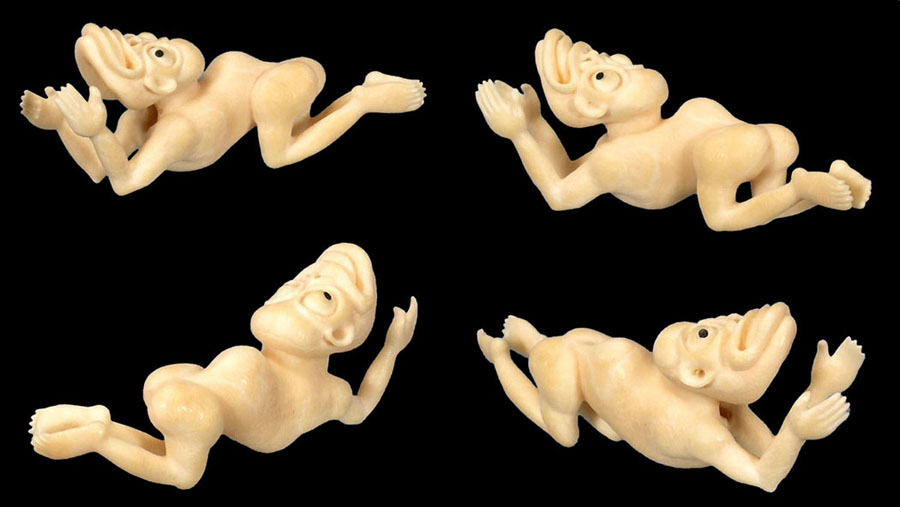Aron Kleist’s Ivory Inuit Tupilak #6: A Celebrated Inuit Masterpiece
Introduction
Aron Kleist, a renowned Inuit artist, carved the iconic ivory Inuit tupilak #6, depicting a smiling man on his knees and belly. This piece, measuring 4.5″ in length, 1.3″ in width, and 2″ in height, showcases the exceptional craftsmanship of Greenlandic Inuit art. It has already been sold to an eager collector.
Historical Context and Significance
For centuries, tupilaks have played an integral role in Greenlandic Inuit culture. Inuit artisans crafted these spiritual creatures to cast spells on their enemies. When early European explorers arrived, fascinated by these legends, they encouraged the Inuit to create physical representations of tupilaks. Initially, the Inuit carved these figures from sperm whale teeth. Over time, they expanded their materials to include narwhal and walrus tusks, wood, and caribou antlers. Therefore, each piece stands as a testament to the rich cultural heritage and artistic skills of the Inuit people.
Characteristics of Modern Tupilaks
Modern tupilaks, like Aron Kleist’s ivory creation, often feature skeletal motifs that symbolize spirits of the dead or mythical figures. Additionally, these carvings may depict spirits in human forms with animalistic features, reflecting the deep connection between humans, animals, and spiritual beliefs in Inuit culture. As a result, the intricate design of tupilak #6 highlights Kleist’s mastery in blending traditional themes with unique artistic expression.
Collectible Art
Collectors highly value tupilaks for their aesthetic appeal and cultural significance. They prize these pieces for their historical roots and the skill involved in their creation. Consequently, Kleist’s tupilak #6, with its detailed carving and expressive form, exemplifies why these pieces are so cherished.
Conclusion
In conclusion, Aron Kleist’s ivory tupilak #6 embodies the rich cultural heritage of the Greenlandic Inuit. Its sale continues a centuries-old tradition, connecting past and present through the art of carving. For collectors and admirers of Inuit art, each tupilak represents a unique piece of history and an enduring symbol of spiritual and artistic expression.

Aron Kleist Inuit
Ivory tupilak –
SOLD

